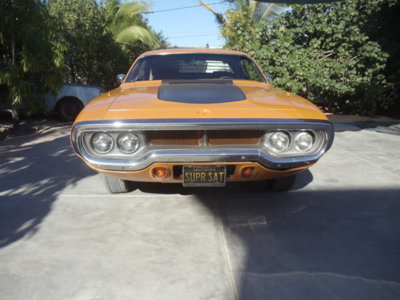Dibbons
Well-Known Member
- Local time
- 5:54 AM
- Joined
- Nov 29, 2014
- Messages
- 4,750
- Reaction score
- 5,459
- Location
- La Paz, B.C.S., Mexico
I know there is a way to use tread temperatures across the width of the tire to diagnose stuff (NASCAR does it) but a quick internet search showed nothing. I noticed after a 15 minute drive the outside tread of the front tires was warm to the touch and the inside tread was cool in comparison. This is the '72 Satellite Sebring Plus 318/auto.


















